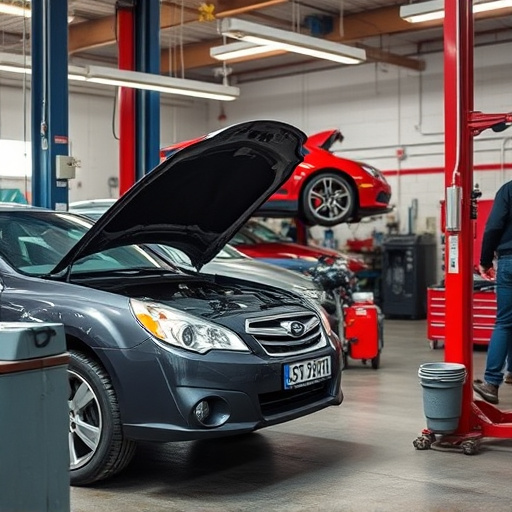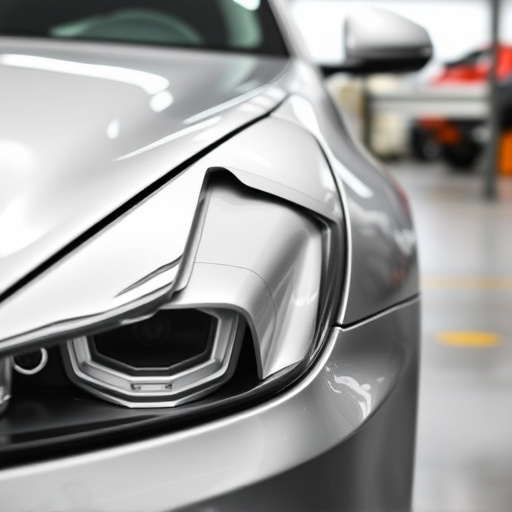Category: tear down for estimate
Tear Down for Estimate: Unlocking Value through Systematic Disassembly
Introduction
In an era where efficiency and sustainability are paramount, the concept of “Tear Down for Estimate” has emerged as a powerful strategy, offering a fresh perspective on asset valuation and recycling. This article aims to provide an in-depth exploration of this innovative approach, its global impact, and its potential to reshape industries. By understanding the intricacies of tear down, we can unlock new avenues for economic growth while minimizing environmental impact.
Understanding Tear Down for Estimate: A Comprehensive Breakdown
Definition:
Tear down for estimate (TDE) is a process that involves meticulously disassembling an asset or product to assess its individual components and value. It goes beyond traditional recycling by providing a detailed analysis of each part, enabling more precise estimation of materials, labor, and potential resale values.
Core Components:
- Disassembly: The initial step involves taking the asset apart, often requiring specialized tools and knowledge. This process ensures that every component is accessible for inspection.
- Component Identification: Each part is carefully identified, categorized, and documented. This includes materials, finishes, and any unique features.
- Condition Assessment: Evaluating the condition of each component is crucial. It involves determining if a part is reusable, recyclable, or requires further processing.
- Estimation: Based on market rates, historical data, and material properties, an estimate is made for each component’s value. This provides a clear picture of the asset’s economic potential.
Historical Context:
The concept of TDE has evolved over time, driven by environmental concerns and advancements in technology. In the early 2000s, industries began to explore more sustainable practices, leading to the development of sophisticated disassembly techniques. The rise of e-waste management and the need for efficient recycling processes further propelled this approach.
Significance:
TDE is significant as it promotes a circular economy by maximizing resource value. It encourages responsible disposal, reduces environmental pollution, and contributes to a more sustainable future. Moreover, it provides valuable insights into product design, enabling manufacturers to create modular, easily recyclable products.
Global Impact and Trends
International Influence:
Tear down for estimate has gained global recognition as countries worldwide embrace circular economy principles. The European Union’s Waste Framework Directive and similar initiatives in North America have driven the adoption of TDE, pushing industries to adopt more sustainable practices.
Regional Trends:
- Europe: Leading the way in recycling and waste management, European countries are implementing strict regulations, incentivizing TDE for electronics and construction materials. Germany, for instance, has a robust system for disassembling and recycling electronic devices.
- North America: The US and Canada are focusing on e-waste management, with growing initiatives to encourage TDE for valuable components. The rise of tech recycling programs is a notable trend.
- Asia Pacific: China, Japan, and South Korea are investing in advanced disassembly technologies, aiming to reduce electronic waste and recover precious metals.
Economic Considerations: Unlocking Market Potential
Market Dynamics:
The TDE market is influenced by factors such as resource scarcity, environmental regulations, and consumer demand for sustainable products. As raw material prices fluctuate, the economic viability of TDE can be significantly impacted.
Investment Patterns:
- Recycling Facilities: Governments and private investors are allocating funds to establish advanced recycling facilities equipped with TDE capabilities.
- E-waste Programs: Initiatives focused on collecting and processing electronic waste are gaining traction, attracting investments from tech companies and environmental organizations.
- Material Recovery: The demand for high-quality recycled materials is driving investment in sorting and refining technologies.
Economic Benefits:
- Cost Reduction: TDE can lead to significant cost savings by avoiding the need for virgin materials and streamlining production processes.
- Revenue Generation: Valuable components and materials recovered through TDE can be resold, generating additional revenue streams.
- Job Creation: The growing recycling sector creates employment opportunities in disassembly, sorting, and material processing.
Technological Advancements: Driving Innovation Forward
Automation and Robotics:
The introduction of advanced robotics and automation has revolutionized TDE processes. Robots can handle heavy components, improve precision, and enhance worker safety. Automated sorting systems further ensure efficient separation of materials.
AI-Powered Inspection:
Artificial Intelligence (AI) algorithms enable detailed analysis of disassembled parts, detecting defects, identifying material types, and classifying components for optimal resale.
3D Printing and Material Recycling:
3D printing technology allows for the creation of new products using recycled materials, expanding the possibilities of TDE. This process reduces the need for traditional manufacturing, creating a more sustainable loop.
Digital Twin Technology:
Creating digital twins of physical assets enables virtual disassembly and analysis, providing valuable insights before actual tearing down. This approach is particularly useful in complex product designs.
Policy and Regulation: Shaping the TDE Landscape
Governing Bodies and Frameworks:
- European Union (EU): The EU’s Waste Framework Directive sets out guidelines for waste management, including obligations for member states to promote recycling and recover valuable materials.
- US Environmental Protection Agency (EPA): While not specific to TDE, EPA regulations encourage responsible disposal of electronics and encourage the development of recycling programs.
- Global E-Waste Monitoring Alliance (GEMA): This international organization promotes e-waste management best practices and data transparency.
Key Policies:
- Extended Producer Responsibility (EPR): Many countries have implemented EPR laws, shifting responsibility for product end-of-life management to manufacturers. TDE is a crucial component in meeting these obligations.
- Recycling Incentives: Governments offer incentives, grants, and tax benefits to encourage industries to adopt TDE practices and invest in recycling infrastructure.
- Strict Disposal Regulations: Stringent rules for hazardous waste disposal ensure that TDE processes handle materials safely, preventing environmental contamination.
Challenges and Criticisms: Overcoming Barriers
Main Challenges:
- Complex Product Designs: Modern products often contain diverse materials and intricate assembly, making disassembly a challenging task.
- Workforce Shortage: Skilled labor is essential for TDE, but there is a global shortage of trained professionals in this field.
- Initial Investment: Setting up advanced recycling facilities requires substantial upfront investment, which can be a barrier for smaller enterprises.
Criticisms and Solutions:
- Environmental Concerns: Critics argue that TDE can lead to increased energy consumption and environmental impact during disassembly. However, continuous process improvements and the use of sustainable technologies mitigate these concerns.
- Data Management: Accurate tracking of component values and materials requires robust data management systems. Implementing blockchain technology can ensure transparency and security.
- Industry Collaboration: Encouraging collaboration between manufacturers, recyclers, and policymakers is vital to creating standardized practices and sharing knowledge.
Case Studies: Real-World Success Stories
Case Study 1: Urban E-Waste Disposal in Berlin, Germany
Berlin’s e-waste collection program utilizes TDE techniques for large-scale recycling. The city has established multiple drop-off points and mobile collection units. After disassembly, valuable components are sold to refurbishers or resellers, while hazardous materials are safely disposed of. This initiative has significantly reduced electronic waste in Berlin and generated revenue from recycled materials.
Case Study 2: Sustainable Furniture Disassembly in Scandinavia
Scandinavian furniture manufacturers have adopted TDE for their product lines, focusing on wood and metal components. By disassembling and sorting materials, they create new products with recycled content, reducing the need for virgin resources. This approach has contributed to the region’s reputation for sustainable design and manufacturing.
Case Study 3: The Role of Blockchain in Electronics Recycling (US)
A US-based tech company implemented a blockchain-based platform for TDE of electronic devices. Each component is tracked through the supply chain, ensuring transparency and allowing manufacturers to claim environmental credits. This system enhances consumer trust and incentivizes responsible recycling practices.
Future Prospects: Embracing Emerging Trends
Growth Areas:
- Sustainable Construction: The construction industry is exploring TDE for recovered materials, particularly in green building projects.
- Automotive Sector: With the rise of electric vehicles, disassembling and recycling batteries presents a significant opportunity for TDE.
- Textile Recycling: Innovations in textile processing enable the creation of new fabrics from recycled clothing, expanding the reach of TDE.
Emerging Trends:
- Digital Twin Integration: As digital twins become more prevalent, they will play a crucial role in optimizing TDE processes and forecasting material recovery rates.
- Circular Supply Chains: Companies are forming partnerships to create closed-loop supply chains, ensuring materials recovered through TDE are reused within their own products.
- Community Engagement: Engaging local communities in recycling initiatives can foster a sense of ownership and increase participation rates.
Strategic Considerations:
- Data Analytics: Advanced analytics will be essential for predicting material availability, demand patterns, and optimal disassembly methods.
- Collaboration Platforms: Developing digital platforms facilitating collaboration between recyclers, manufacturers, and researchers can accelerate TDE innovation.
- Policy Advocacy: Continued policy support and advocacy are necessary to drive investment and ensure the long-term viability of TDE practices.
Conclusion: A Sustainable Future through Tear Down
Tear down for estimate is not just a process; it represents a paradigm shift towards sustainability, efficiency, and resource conservation. As the world navigates an era of increasing material scarcity and environmental awareness, TDE emerges as a powerful tool to unlock value from existing assets. By embracing this strategy, industries can contribute to a circular economy, minimize waste, and create new opportunities for growth.
The global impact of TDE is evident in its growing adoption across sectors and regions. As technological advancements continue and policies evolve, the potential for TDE to revolutionize asset management will only increase. It is through these collective efforts that we can build a more sustainable future while ensuring valuable resources are not left untapped.
FAQ Section: Answering Common Concerns
Q: How does TDE benefit manufacturers?
A: TDE allows manufacturers to recover valuable materials, reduce production costs by utilizing recycled components, and enhance their environmental reputation. It also provides insights into product design for more sustainable manufacturing processes.
Q: Are there any environmental risks associated with TDE?
A: With proper regulations and technology, TDE can minimize environmental risks. Strict waste management practices, safe handling of hazardous materials, and responsible recycling ensure that the process is eco-friendly when executed correctly.
Q: Can small businesses implement TDE practices?
A: Absolutely! Small businesses can start by partnering with local recyclers or investing in basic disassembly equipment. While initial costs may be higher, long-term benefits include cost savings and contributing to a sustainable community.
Q: What role does government play in promoting TDE?
A: Governments drive TDE adoption through policies like Extended Producer Responsibility (EPR), providing incentives for recycling, and setting environmental standards. They also fund research and infrastructure development to support the growth of sustainable recycling practices.
Q: How can consumers contribute to TDE?
A: Consumers can participate by responsibly disposing of electronic waste at designated collection points and supporting companies that prioritize sustainability in their products. Encouraging manufacturers to adopt TDE practices through consumer demand is also a powerful way to drive change.
Tear Down for Estimate: Transforming Vehicle Safety Inspections
Unlock Repair Efficiency: Mastering Tear Down for Estimate

The tear down for estimate process in collision repair involves disassembling and inspecting vehicle…….
Unraveling Tear Down: Efficient Collision Repair Estimation
Master Estimations: Tear Down for Accurate Numbers

Accurate project estimation in collision centers is challenging, often leading to financial losses a…….
Transparency Through Tear Down: Cost Estimates & Repairs
Mastering Tear Down: Accurate Commercial Vehicle Damage Estimates
Optimize Estimates, Build Loyalty: Tear Down for Success

The tear down for estimate process involves meticulously disassembling a vehicle to assess structura…….
Optimizing Collision Repairs: Efficient Tear Down Strategies for Accurate Estimates

The tear down for estimate process is vital in collision and automotive repair industries, enabling…….













